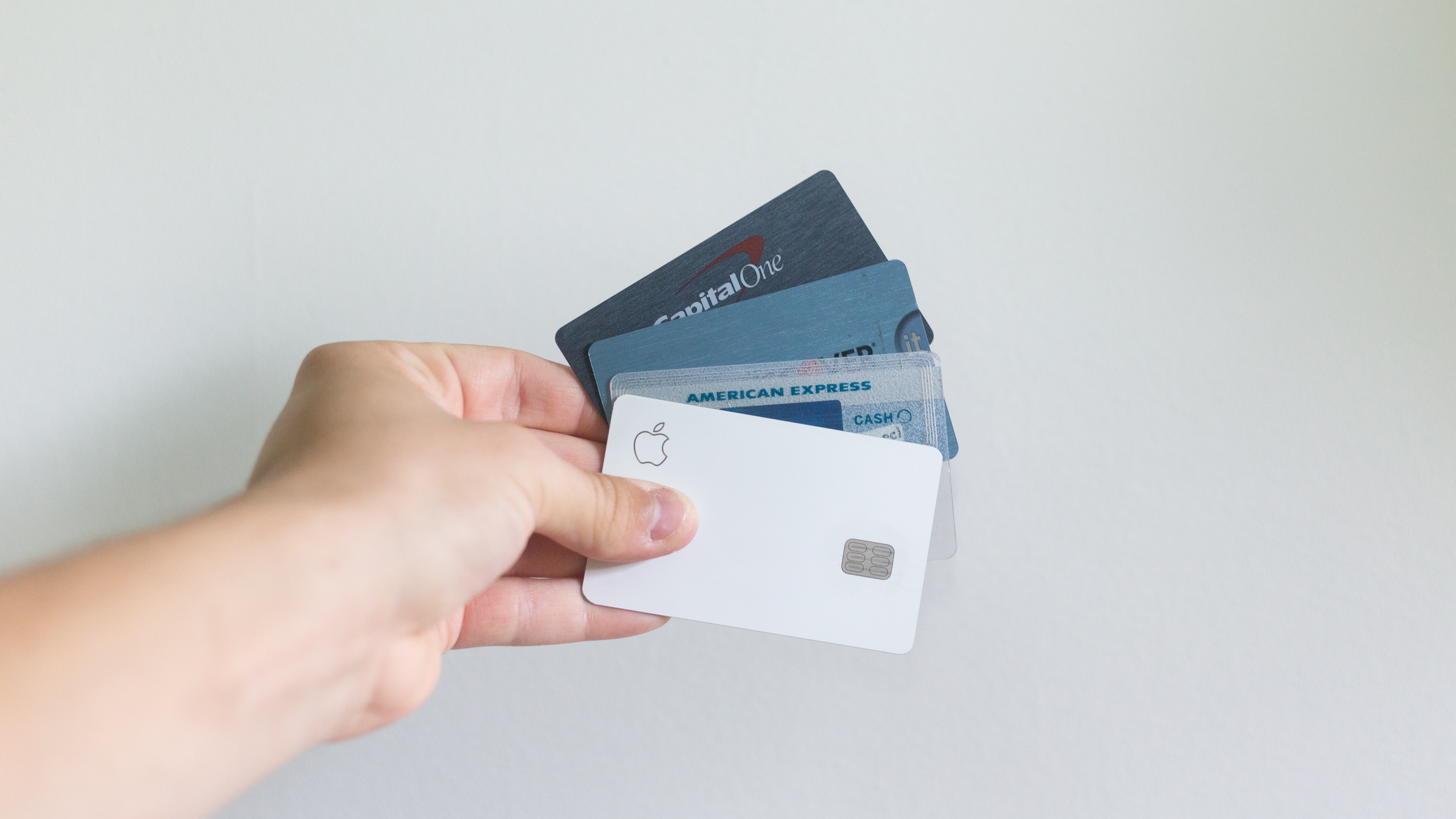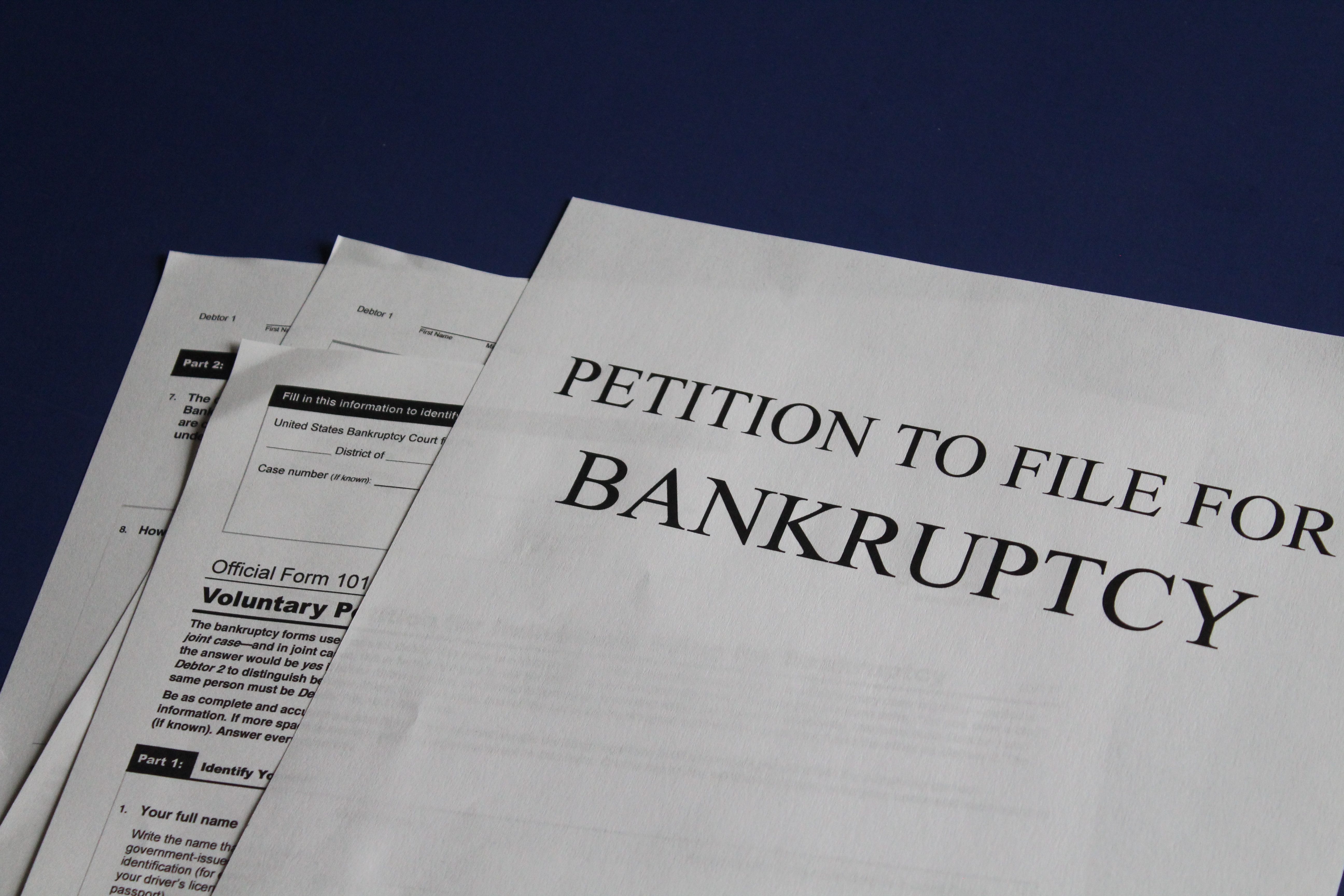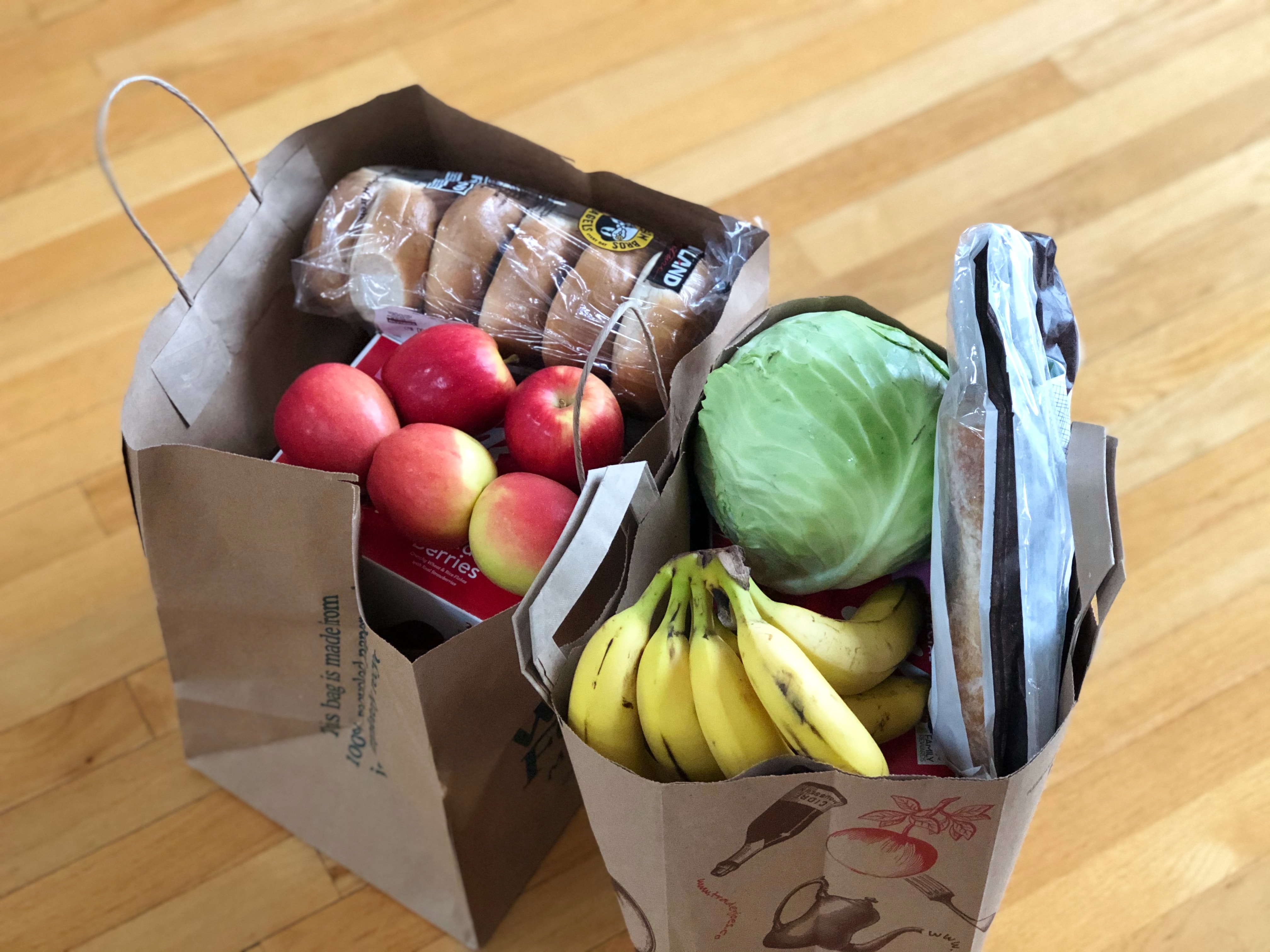Debt Relief California: Ultimate Guide to Getting Past Your Debt
Are you drowning in debt and feeling overwhelmed? If so, you're not alone. Many residents of California are struggling to keep up with their financial obligations, but there is a solution: Debt Relief California. In this blog, we will explore the various debt relief options available in California and provide you with practical strategies to improve your financial situation.
So, if you're ready to take charge of your finances and find a way out from under the weight of debt, keep reading.

Table of Contents
- California Debt Statistics
-
Is There a Debt Relief Program in California?
-
What are Some Debt Relief Acts in California?
-
What is the Statute of Limitations on Debt Collection in California?
-
How does a Debt Relief Program Work?
-
When Should You Use a Debt Relief Program?
-
Financial Assistance Programs in California
-
Food Assistance Programs in California
-
California Housing Assistance Programs
-
How Everything Home Owner Can Help with Debt Relief in California
California Debt Statistics
California is known for its beautiful weather, stunning beaches, and thriving entertainment industry. However, living in the Golden State can come with a higher cost compared to other parts of the United States. While the cost of living can vary depending on the specific city or region within California, it is generally higher than the national average.
According to the Council for Community and Economic Research, California cities consistently rank among the most expensive in the country. San Francisco, for example, is often cited as one of the priciest cities to live in, with housing costs being a significant contributing factor. Los Angeles, San Diego, and other major cities in California also have higher costs of living compared to the national average.

Cost of Housing in California
One major expense that affects the cost of living in California is housing. The state's high demand for housing coupled with limited supply has resulted in steep housing prices. In fact, according to the California Association of Realtors, the median home price in California is significantly higher than the national average.
Average Indebtedness in California
In terms of debt, Californians do carry a higher debt burden compared to the national average. According to a report by Experian, as of 2021, the average total debt per person in California was $87,681, which is above the national average of $80,929. This includes various types of debt such as credit card debt, mortgage debt, auto loans, and student loans.
In particular, Californians tend to have higher mortgage debt compared to other states due to the expensive housing market. Additionally, student loan debt is also a significant contributor to the overall debt burden in California, as many residents pursue higher education in the state.
While these statistics may seem daunting, it's important to note that debt relief options are available for Californians who are struggling to manage their debts. Debt relief programs, such as debt consolidation, debt settlement, and credit counseling, can provide individuals with the tools and resources to regain control of their finances and work towards a debt-free future.
Related Reading
• Washington Debt Relief• Debt Relief California
• Virginia Debt Relief
• Florida Debt Relief
• Texas Debt Relief
• New York Debt Relief
• New Jersey Debt Relief
Is There a Debt Relief Program in California?
Here are some of the different types of debt relief programs in California.
1. Debt Consolidation
Debt consolidation is a program that combines multiple debts into a single loan with a lower interest rate. Qualifying for debt consolidation typically requires a good credit score, steady income, and the ability to make monthly payments on the consolidated loan.
2. Debt Management Plan (DMP)
A DMP is a program that helps individuals create a repayment plan with their creditors, often through a credit counseling agency. To qualify for a DMP, individuals usually need to have a steady income and be able to make consistent monthly payments.

3. Debt Settlement
Debt settlement involves negotiating with creditors to reduce the total amount owed. To qualify for debt settlement, individuals usually need to demonstrate financial hardship, such as being unable to make minimum payments and have a lump sum of money available to settle the debts.
4. Bankruptcy
Bankruptcy is a legal process that allows individuals to eliminate or restructure their debts. To qualify for bankruptcy in California, individuals need to meet certain eligibility criteria, including passing a means test and completing credit counseling.
5. Student Loan Forgiveness
For those burdened with student loan debt, there are various forgiveness programs available, such as Public Service Loan Forgiveness (PSLF) and Teacher Loan Forgiveness. Qualifications for these programs typically include working in specific professions or for qualifying organizations for a certain number of years.
6. Home Affordable Modification Program (HAMP)
HAMP is a program designed to help homeowners struggling with mortgage payments. To qualify, homeowners need to meet specific criteria, such as having a mortgage on their primary residence, facing financial hardship, and having a mortgage debt ratio that exceeds a certain percentage.
7. California Debt Relief Grant Programs
There are also grant programs available in California to help individuals and families struggling with debt. Qualifications for these grants vary depending on the specific program, but they often consider factors such as income level, financial need, and specific circumstances.
Remember, each debt relief program has its own requirements and eligibility criteria. It's important to carefully evaluate your situation and consult with a reputable debt relief agency or financial professional to determine which program may be the best fit for your needs.
What are Some Debt Relief Acts in California?
Debt relief regulations are crucial in protecting the rights and well-being of California residents facing financial difficulties. These laws help govern debt collection practices, consumer protections, and bankruptcies, providing a much-needed safety net for those struggling with debt. Additionally, there are federal debt relief laws and regulations that supersede California-specific measures.
California Fair Debt Settlement Practices Act
Governor Gavin Newsom signed the California Fair Debt Settlement Practices Act to protect Californians from unfair practices that debtors used to use against consumers. Here's a quick summary to help you.
The California Fair Debt Settlement Practices Act is a law that protects people in California who are trying to settle their debts. It sets rules for companies that offer debt settlement services and payment processors that handle the money for these services.
Here's how it protects consumers:
-
Definitions: It defines terms like "Debt Settlement Providers" (companies that help negotiate debt) and "Payment Processors" (companies that handle money for these services).
-
Unfair Practices: It stops these companies from using unfair, deceptive, or abusive practices when helping with debt settlement.
-
Contract Requirements: Debt settlement companies must give consumers important information before they sign a contract, including no guarantees of debt reduction and the impact on credit scores.
-
Monthly Statements: Payment processors and debt settlement companies must provide monthly statements about the money they handle, especially if requested by the consumer.
-
Contract Cancellation: Consumers can cancel their debt settlement contracts at any time without penalties, with different rules for how to cancel.
-
Ban on Advance Fees: Debt settlement companies can't charge any fees until they've helped lower at least one debt, and the fees must be proportional to the savings.
-
Exemptions: Some entities like banks and certain law firms are exempt from these rules.
-
Civil Enforcement: Consumers can sue if these rules are violated and may get damages, injunctive relief, and attorney's fees.
This law aims to protect people from unfair practices when dealing with their debts.
Fair Debt Collection Practices Act (FDCPA)
In California, one of the most significant debt relief regulations is the Fair Debt Collection Practices Act (FDCPA). This act prohibits debt collectors from engaging in abusive, deceptive, or unfair practices when attempting to collect debts. It sets strict guidelines for communication, disclosure, and harassment prevention, ensuring that individuals are treated fairly and respectfully throughout the debt collection process.
California Rosenthal Fair Debt Collection Practices Act (RFDCPA)
Another important piece of legislation is the California Rosenthal Fair Debt Collection Practices Act (RFDCPA). This state-level law mirrors the FDCPA but extends its protections to cover debt collectors who are not covered by the federal act, such as original creditors. The RFDCPA ensures that both debt collectors and original creditors follow ethical practices when collecting debts in California.
Consumer Credit Reporting Acts
California also has consumer protection laws, such as the California Consumer Credit Reporting Agencies Act (CCRAA) and the California Consumer Credit Reporting Agencies Act (CCRAA). These laws regulate credit reporting agencies and ensure that consumers have access to accurate and fair credit reports. They also provide mechanisms for consumers to dispute inaccurate information and hold credit reporting agencies accountable for any violations.
Bankruptcy Code
When it comes to bankruptcy, the Bankruptcy Code, a federal law, governs the process in California. Bankruptcy laws provide individuals and businesses with the opportunity to eliminate or restructure their debts under court supervision. These laws protect debtors from creditor harassment, wage garnishments, and other adverse actions, and offer a fresh start to those overwhelmed by unmanageable debt.

Federal debt relief laws and regulations, such as the Bankruptcy Code, generally supersede state laws, including those in California. However, state laws can provide additional protections or regulations that complement the federal laws. It's important for individuals seeking debt relief to be aware of both federal and state regulations, as they work together to safeguard their rights and financial well-being.
What is the Statute of Limitations on Debt Collection in California?
In California, there is a statute of limitations for consumer debt that lasts four years. This statute serves to protect consumers from being sued by creditors after this period has passed. However, it is important to understand the nuances of this statute, especially when it comes to partial payments and how they may impact the clock.
The statute of limitations for consumer debt in California can be found in the California Code of Civil Procedure. According to Section 337, creditors have four years from the date of default to file a lawsuit against a consumer to collect the debt. Once this four-year period has expired, creditors are generally unable to pursue legal action to collect the debt.
What Happens If You Make a Partial Payment?
But what happens if a consumer makes partial payments during this time? The statute of limitations does allow for certain circumstances to restart the clock. If a consumer makes a partial payment towards the debt, it can be seen as an acknowledgment of the debt and can potentially reset the four-year period. This is known as "tolling" the statute of limitations.
However, there are specific requirements for a partial payment to be considered as tolling the statute of limitations. The payment must be made voluntarily and without any coercion from the creditor. Additionally, the payment must be made on a debt that is still within the statute of limitations period. If the debt is already beyond the four-year mark, a partial payment will not restart the clock.
It is also worth noting that partial payments made after the expiration of the statute of limitations do not revive the debt or restart the clock. Once the statute of limitations has expired, creditors lose their ability to enforce the debt through legal means.
The statute of limitations for consumer debt in California serves as a crucial protection for consumers. It prevents creditors from pursuing legal action indefinitely and gives consumers some peace of mind after a certain period of time has passed. Understanding the nuances of the statute, particularly when it comes to partial payments, can help consumers navigate their debt relief options more effectively.
How does a Debt Relief Program Work?
A debt relief program is designed to help individuals who are struggling with overwhelming debt. It provides a structured plan to reduce or eliminate debt, allowing individuals to regain control of their finances and work towards a debt-free future. While the specific steps may vary depending on the financial situation, there are generally three common stages in a debt relief program: assessment, negotiation, and repayment.
Assessment
In the assessment stage, a debt relief company or financial advisor will thoroughly evaluate the individual's financial situation. This includes gathering information about their debts, income, expenses, and assets. By analyzing this information, the debt relief expert can gain a comprehensive understanding of the individual's financial standing and devise an appropriate plan of action.
Negotiation
Once the assessment is complete, the debt relief program moves on to the negotiation stage. This is where the debt relief company contacts the individual's creditors to negotiate lower interest rates, reduced monthly payments, or even a partial forgiveness of the debt. These negotiations aim to make the debt more manageable and affordable for the individual, allowing them to make progress towards paying off their debts.
Repayment
The final stage of a debt relief program is repayment. Once the negotiations are successful and new terms have been agreed upon, the individual will make regular payments to the debt relief company. The company will then distribute these payments to the creditors according to the negotiated terms. This simplifies the repayment process for the individual, as they only need to make a single payment to the debt relief company instead of juggling multiple payments to different creditors.
Important Considerations
However, it's important to note that the steps in a debt relief program can vary based on an individual's financial situation. For example, if someone has a stable income and can afford to make regular payments towards their debts, they may opt for a debt consolidation program. This involves combining all of their debts into a single loan with a lower interest rate, making it easier to manage and pay off.
On the other hand, individuals who are facing severe financial hardship and are unable to make any payments may consider a debt settlement program. This involves negotiating with creditors to settle the debt for a reduced amount, typically paid in a lump sum or over a short period of time. While this option can have a negative impact on credit scores, it may be the best solution for those who are unable to repay their debts in full.
In some cases, individuals may also need to explore bankruptcy as a debt relief option. This typically occurs when the debt is insurmountable and there are no other viable solutions. Bankruptcy allows individuals to discharge their debts and make a fresh start, but it should be considered as a last resort due to its long-term impact on credit.
When Should You Use a Debt Relief Program?
The best time to start thinking about using a debt relief program is when you find yourself struggling to make your monthly debt payments. If you're constantly juggling multiple credit card bills, student loans, or other types of debt, it may be time to explore debt relief options. By taking action early, you can prevent your debt from spiralling out of control and avoid more serious financial consequences.
You may be wondering how many other people consider using debt relief programs as well. The truth is, there are millions of people in California and across the country who are in a similar situation. According to recent statistics, the average American household carries over $90,000 in debt. This staggering number highlights the widespread need for debt relief programs.
Fortunately, debt relief programs can be incredibly helpful for consumers in restructuring or relieving their debt burdens. These programs offer various strategies and solutions, such as debt consolidation, debt settlement, or even bankruptcy. Each option has its own benefits and considerations, so it's important to carefully evaluate which one is the best fit for your unique financial circumstances.

Advantages of Using Debt Relief Programs
Debt relief programs can provide several advantages. First and foremost, they can help you negotiate with creditors to reduce the total amount of debt you owe. This can lead to significant savings and make your debt more manageable. Additionally, debt relief programs can help you develop a structured repayment plan that aligns with your budget and financial goals. This can relieve the stress of overwhelming debt and provide a clear path towards financial freedom.
Another advantage of debt relief programs is that they can help you avoid the negative consequences of failing to repay your debts. These consequences can include late fees, higher interest rates, collection calls, and even legal action. By taking proactive steps through a debt relief program, you can prevent these consequences from impacting your financial well-being.
Related Reading
• Pennsylvania Debt Relief• Wisconsin Debt Relief
• Arizona Debt Relief
• Maryland Debt Relief
• Massachusetts Debt Relief
• Illinois Debt Relief
• Michigan Debt Relief
Financial Assistance Programs in California
Sure! Here is a list of financial assistance programs in California, excluding food assistance and housing:
1. California Earned Income Tax Credit (CalEITC)
The CalEITC program aims to provide tax relief for low-income working individuals and families. It is meant to solve the financial burden of taxes for those who qualify. Eligibility is based on income and family size. To apply, individuals can visit the California Franchise Tax Board website.
2. California Working Families Credit (CWFC)
The CWFC program helps low-income families with young children by providing an additional credit on top of the federal Earned Income Tax Credit (EITC). It aims to reduce the financial strain on working families. Eligibility criteria are similar to the federal EITC. Interested individuals can apply through the California Franchise Tax Board website.
3. California Low-Cost Auto Insurance Program (CLCA)
The CLCA program offers affordable car insurance to income-eligible drivers who meet certain requirements. It is designed to help low-income individuals and families have access to essential transportation. To qualify, applicants must meet income limits and have a good driving record. Applications can be submitted through the California Department of Insurance website.
4. California Alternate Rates for Energy (CARE) Program
The CARE program provides a discount on monthly electric and gas bills for eligible low-income households. It aims to alleviate the burden of high energy costs. Qualification is based on household income and participation in certain public assistance programs. Interested individuals can apply through their respective utility provider.
5. California Lifeline Program
The California Lifeline program offers discounted home phone and cell phone services to eligible low-income individuals and families. It helps ensure access to vital communication services. Qualification is based on income or participation in certain public assistance programs. To apply, individuals can contact participating phone service providers directly.
6. California College Promise Grant (formerly BOG Fee Waiver)
The California College Promise Grant provides eligible California residents with waived enrollment fees at community colleges. It aims to make higher education more affordable for low-income individuals. Qualification is based on income or meeting specific eligibility criteria. Interested students can apply through their community college's financial aid office.
7. California Employment Development Department (EDD) Unemployment Insurance Program
The EDD Unemployment Insurance Program provides financial assistance to eligible individuals who have become unemployed through no fault of their own. It helps replace a portion of lost wages during the transition period. Eligibility is based on past earnings and actively seeking employment. Applications can be filed online through the EDD website.
These are just a few examples of financial assistance programs available in California. Each program serves a different purpose and has specific eligibility requirements. It is recommended that individuals visit the respective program websites or contact the relevant agencies to get detailed information and apply for assistance.
Related Reading
• Tennessee Debt Relief
• Debt Relief Programs Georgia
• Indiana Debt Relief
• Missouri Debt Relief
• Ohio Debt Relief Programs
• NC Debt Relief
Food Assistance Programs in California
Sure! Here is a list of food assistance financial programs offered in California, as well as information on how to qualify and apply for each program:
1. CalFresh (formerly known as Food Stamps): CalFresh is a program that provides monthly food benefits to low-income individuals and families. It is meant to help alleviate hunger and improve nutrition. Eligibility is based on household income and size. To apply, individuals can visit their local county welfare office or apply online through the California Department of Social Services website.
2. School Meals Program: This program provides free or reduced-price meals to children attending schools in California. It aims to ensure that children have access to nutritious meals during the school day. Eligibility is based on household income and is determined through an application process. Families can obtain applications from their child's school or the school district office.
3. Women, Infants, and Children (WIC) Program: WIC is a nutrition program that provides healthy food, nutrition education, and support to low-income pregnant women, new mothers, and young children. The program aims to improve the health outcomes of these individuals. To qualify for WIC, individuals must meet certain income requirements and have a nutritional need. Interested individuals can find a local WIC agency by calling the toll-free number provided by the California WIC Program.

4. Elderly Nutrition Program: This program offers nutritious meals to seniors aged 60 and older. It is designed to improve their overall health and well-being. To qualify, individuals must meet certain age and income requirements. Seniors can contact their local Area Agency on Aging to find out more about the program and how to apply.
5. Food Banks and Food Pantries: Food banks and food pantries are community-based organizations that provide free food to individuals and families in need. They offer a variety of food assistance programs, including emergency food boxes, community meals, and mobile food distribution. These programs are open to anyone in need, regardless of income. Interested individuals can find a local food bank or food pantry through the California Association of Food Banks website.
These are just a few examples of the food assistance financial programs available in California. Each program is designed to address specific needs and eligibility requirements vary. However, the common goal of these programs is to ensure that individuals and families have access to nutritious food, regardless of their financial situation. If you or someone you know is in need of food assistance, I encourage you to explore these programs and take advantage of the support available to you.
California Housing Assistance Programs
There are several housing assistance programs offered in California that aim to provide relief to individuals and families facing various housing challenges. These programs are designed to help eligible residents find affordable housing, prevent homelessness, and improve their quality of life. Here is a list of some prominent programs available in California, including the cities and municipalities they serve:
1. Section 8 Housing Choice Voucher Program
The Section 8 program offers rental assistance to low-income individuals and families. Participants receive a voucher that can be used to pay a portion of their rent in privately-owned housing. This program is available statewide in California, including major cities such as Los Angeles, San Francisco, San Diego, and Sacramento. Eligibility is based on income level and other factors, and interested individuals can apply through their local public housing authority.
2. CalHFA Home Loan Programs
The California Housing Finance Agency (CalHFA) offers several home loan programs to assist low-to-moderate income individuals and families in purchasing their first home. These programs provide competitive interest rates and down payment assistance, making homeownership more attainable. CalHFA programs are available throughout the state, including cities like Oakland, San Jose, Fresno, and Long Beach. Eligibility requirements vary based on the specific program, and interested applicants can visit the CalHFA website for more information and to apply.
3. Keep Your Home California
Keep Your Home California is a program designed to prevent foreclosure and assist struggling homeowners in California. It offers various forms of assistance, including mortgage payment assistance, principal reduction, and transition assistance for those unable to retain their homes. The program is available statewide, including in cities like Riverside, Bakersfield, Anaheim, and Santa Ana. Eligibility requirements differ depending on the specific assistance program, and interested homeowners can apply directly through the Keep Your Home California website.
4. Shelter Plus Care Program
The Shelter Plus Care program provides rental assistance and supportive services to individuals with disabilities who are experiencing homelessness or at risk of becoming homeless. This program operates in various cities and municipalities throughout California, such as San Bernardino, Santa Clara, Orange County, and Alameda County. Eligible participants must be referred through local Continuum of Care organizations, which can help individuals access appropriate services and apply for the program.
5. Emergency Solutions Grant Program
The Emergency Solutions Grant (ESG) Program provides funding to local governments and nonprofit organizations to assist individuals and families experiencing homelessness or at risk of homelessness. The program offers various services, including emergency shelter, rapid rehousing, homelessness prevention, and outreach. ESG is available in cities and municipalities across California, including San Diego, San Francisco, Oakland, and Sacramento. Eligibility and application processes may vary depending on the organization offering the services, so interested individuals should reach out to their local service providers for more information.
These are just a few examples of the housing assistance programs available in California. Each program aims to address specific housing challenges and has its own set of eligibility criteria and application processes. Individuals seeking assistance should research the programs that best suit their needs and reach out to the relevant organizations for detailed information and guidance on how to apply. By taking advantage of these programs, Californians can find the support they need to secure affordable housing and alleviate their housing-related financial burdens.
How Everything Home Owner Can Help with Debt Relief in California
EverythingHomeOwner.com provides a valuable resource for consumers who are seeking assistance with their debt relief questions or issues. By connecting with one of their qualified debt relief counselors, individuals can gain expert guidance and support to help them navigate through their financial challenges.
Debt can be a significant burden, causing stress and anxiety for many homeowners in California. Whether it's credit card debt, medical bills, or student loans, finding a way to manage and ultimately eliminate debt is crucial for financial stability and peace of mind. That's where EverythingHomeOwner.com comes in.
By connecting with a qualified debt relief counselor through EverythingHomeOwner.com, consumers can access personalized assistance tailored to their specific needs. These debt relief experts have the knowledge and experience to guide individuals through the various options available to them, including debt consolidation, debt settlement, and bankruptcy alternatives.
So, if you're struggling with debt and need expert guidance, EverythingHomeOwner.com is here to help. By connecting with their qualified debt relief counselors, you can gain the support and knowledge you need to overcome your financial challenges and build a brighter future. Don't let debt hold you back any longer – take the first step towards debt relief today.